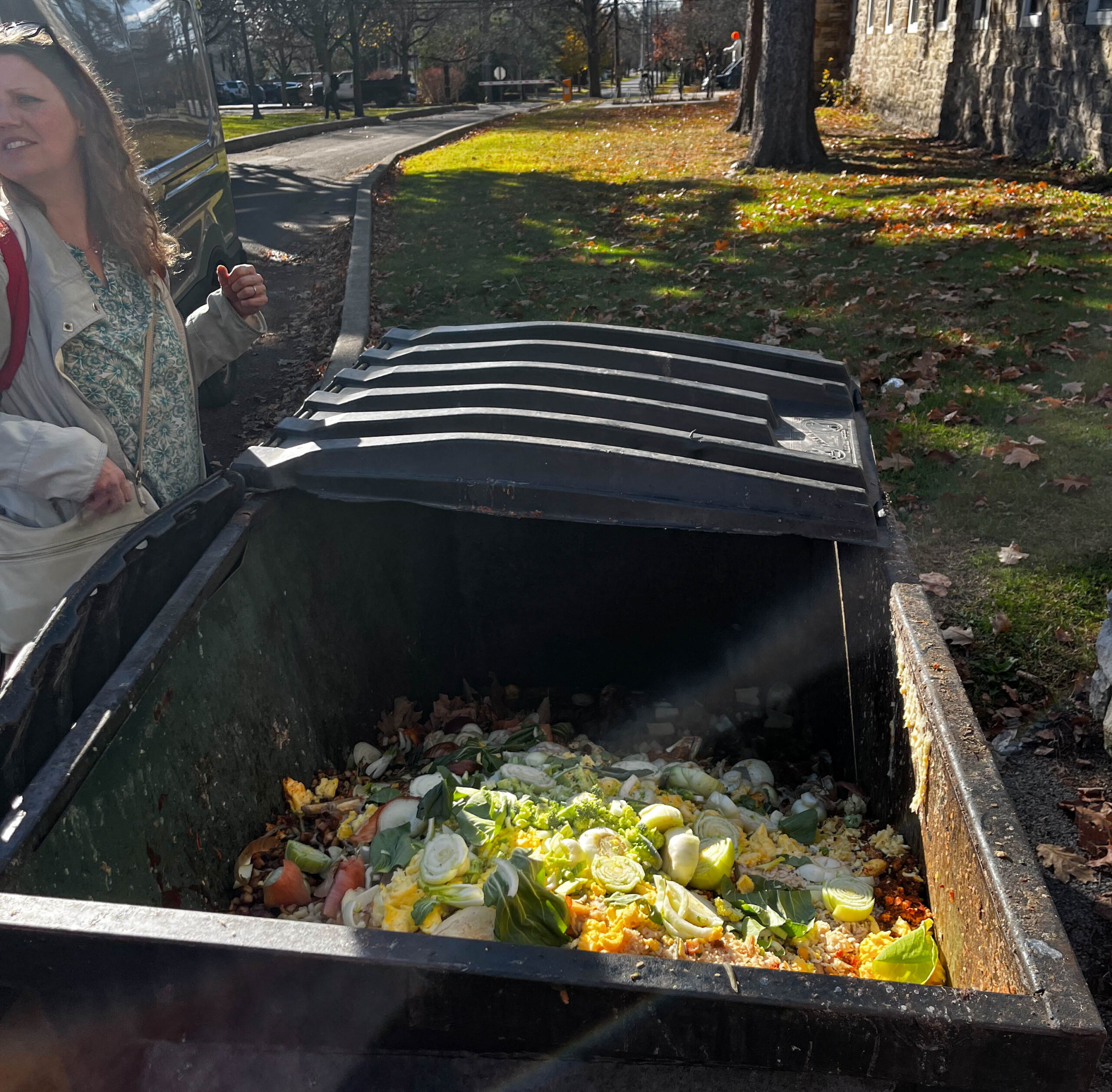SLU Food Waste Systems
Lunch and Learn Details Audit’s Results
The latest edition of the Campus Ecology Lunch and Learn presentations focused on St. Lawrence University’s food waste systems. The talk was given by Dr. Lori Clark, a professor in the Environmental Studies and Public health departments. She spoke on the food waste audit done at SLU and other north country collages in collaboration with Dr. Susan Powers from Clarkson University and funded by a grant from New York State Pollution Prevention Institute.
The audit was conducted by student volunteers at Dana, NorthStar Café and Pub 56. In Dana all kitchen scraps and overproduction were weighed along with the scrapings from plates returned in the dish line. Similarly, at NorthStar students intercepted discarded pub containers and scraped the food into the compost bin. To capture the food waste generated in theme houses and Greek life small compost bins were given out which were weighed at the end of the week.
The audit found that SLU creates over four tons of food waste per week between Dana, NorthStar and satellite eateries. Food waste at SLU can be broken down into three sources, kitchen scraps, overproduction and post-consumer. “The amount of waste from scraping plates accounted for the majority of food waste,” said Clark, referencing post-consumer food waste. This results from consumers taking too much food and not finishing all of their meals.
Despite post-consumer food waste accounting for the majority of food waste at SLU none of it is composted. Instead, all of it is sent to the Development Authority of the North Country landfill in Rodman New York, according to Erik Perry. “Butters, jams, jellies, foil lids and anything else that would contaminate food is pretty much the only barrier to compost,” said Perry. However, the kitchen scraps and overproduction result in, “300-800 pounds a day of compost,” according to Perry.
Another result of the food waste audit was the creation of a tool to help other universities and institutions to better understand their food waste. “We made a food waste calculator for any school to use,” stated Clark. “They can plug in some estimates,” said Clark, stating that this makes it easier for other schools to understand their food waste without conducting an exhaustive food waste audit. The creation of a tool using models based upon the data collected is more accurate for other similar institutions than the more general food waste calculator provided by the Department of Environmental Conservation.
Further reduction of food waste on campus ultimately comes down to the people using dining services. The number of plates being cleared makes it impossible for Dana staff to sort contaminants out of post-consumer food waste according to Perry. He continued “having sorting on the student side would help out a lot.” Furthermore, students can sort their extra food at NorthStar Cafe into the compost bin rather than throwing it away.



